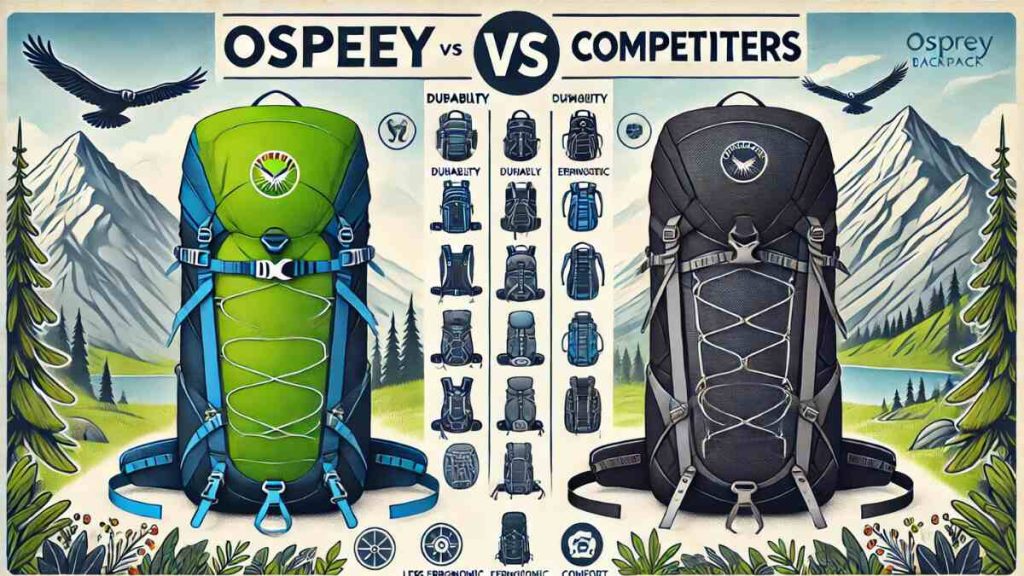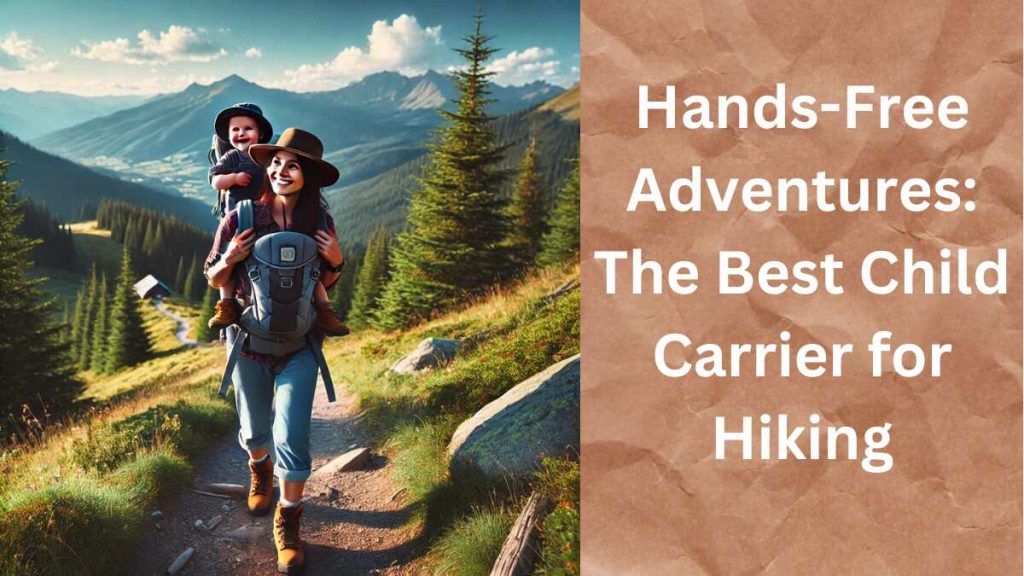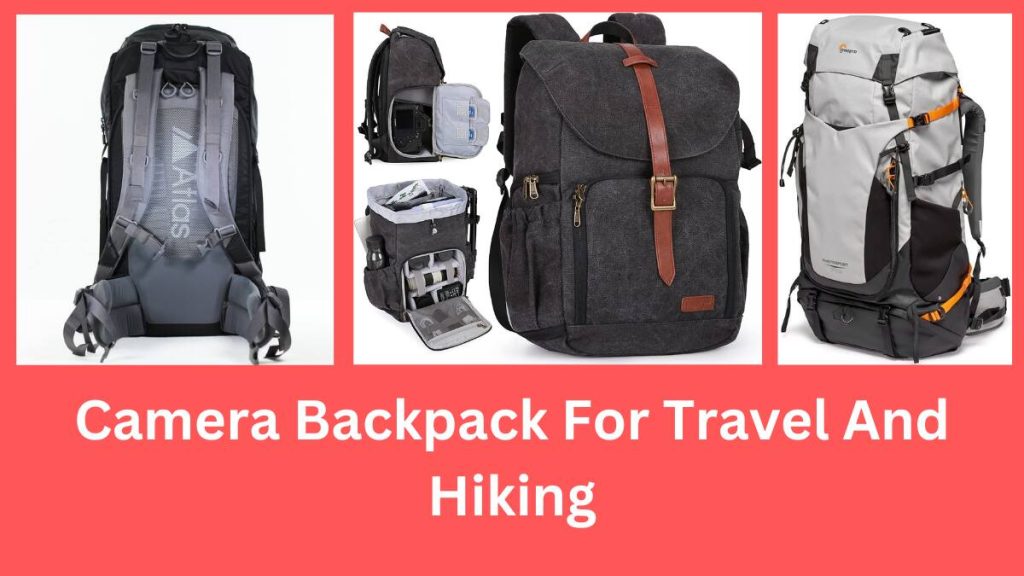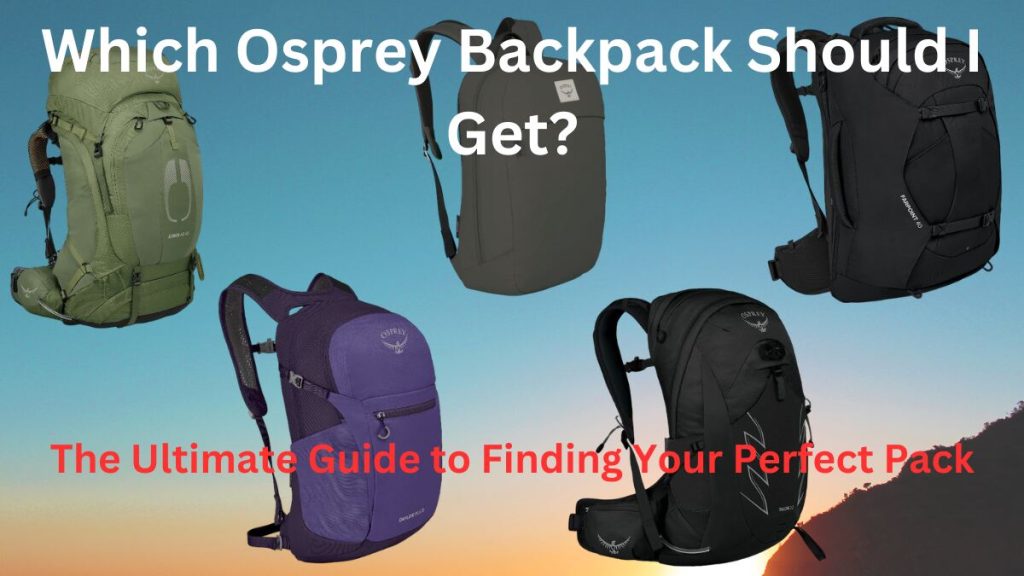When it comes to choosing the perfect backpack for your adventures, the decision often boils down to a critical comparison: Osprey Backpacks vs. Competitors. Whether you’re an avid hiker, a frequent traveler, or someone who simply needs a reliable pack for daily use, the right backpack can make all the difference. Osprey has long been a standout name in the outdoor gear industry, renowned for its innovative designs, exceptional durability, and commitment to comfort. But how does it stack up against other leading brands like Deuter, Gregory, Patagonia, and The North Face? In this post, we’ll dive deep into the world of backpacks, exploring what makes Osprey a favorite among outdoor enthusiasts while also examining how its competitors measure up in terms of quality, features, and value.
The debate between Osprey and its competitors isn’t just about brand loyalty—it’s about finding the right fit for your specific needs. Are you looking for a backpack that offers unbeatable ergonomic support for long treks? Or perhaps you prioritize eco-friendly materials and sustainable practices? Maybe budget is your primary concern, and you’re weighing the cost of premium features against more affordable options. Whatever your priorities, this comparison will help you navigate the crowded market of backpacks, highlighting the strengths and weaknesses of Osprey while shedding light on what its rivals bring to the table. By the end of this post, you’ll have a clearer understanding of whether Osprey deserves its top-tier reputation or if one of its competitors might be the better choice for your next adventure. Let’s get started!
Post Contents
- 1 Brief Overview of Osprey as a Brand
- 2 Osprey Backpacks vs. Competitors
- 3 Overview of Osprey Backpacks
- 4 Brief Introduction to Major Competitors
- 5 Osprey Backpacks vs. Competitors: Comparison Criteria
- 6 Use Case Scenarios
Brief Overview of Osprey as a Brand
Osprey is a globally recognized leader in the outdoor gear industry, celebrated for its high-quality, durable, and innovative backpacks. Founded in 1974, the brand has built a reputation for crafting packs tailored to specific activities, from hiking and backpacking to travel and everyday commuting. Osprey’s commitment to ergonomic design, sustainability, and customer satisfaction is evident in features like their Anti-Gravity suspension system, use of recycled materials, and the All Mighty Guarantee, which promises to repair or replace any damaged pack, no matter the cause. With a wide range of models designed to meet the needs of outdoor enthusiasts and urban adventurers alike, Osprey has become a trusted name for those who demand reliability and performance from their gear.
Importance of Choosing the Right Backpack
Selecting the right backpack is crucial, whether you’re embarking on a multi-day trek, navigating a bustling city, or simply carrying your essentials for the day. A well-designed backpack not only ensures comfort and durability but also enhances functionality, making it easier to organize and access your gear. For outdoor activities, the right pack can improve weight distribution, reduce fatigue, and withstand harsh conditions. For travel or daily use, it can provide convenience, security, and style. With so many options available, understanding the strengths and weaknesses of different brands is key to making an informed decision that aligns with your needs and budget.
Osprey Backpacks vs. Competitors
Purpose of the Comparison
The goal of this comparison is to evaluate Osprey backpacks against their competitors in terms of quality, features, and overall value. By examining factors such as durability, comfort, design, price, and sustainability, we aim to provide a clear picture of how Osprey stacks up against other leading brands. Whether you’re a seasoned adventurer or a casual user, this analysis will help you determine if Osprey is the right choice for you or if a competitor might better suit your requirements.
Overview of Osprey Backpacks
Osprey was founded in 1974 by Mike Pfotenhauer, who began crafting backpacks in his garage in Santa Cruz, California. What started as a small, passion-driven operation quickly grew into a globally recognized brand, known for its innovative designs and unwavering commitment to quality. Over the decades, Osprey has earned a stellar reputation among outdoor enthusiasts, travelers, and everyday users alike.
Key Features of Osprey Backpacks
Durability and Materials
Osprey backpacks are built to last, thanks to the use of high-quality materials and reinforced stitching. The brand employs durable fabrics like nylon and polyester, often with ripstop technology to prevent tears from spreading. Many of their packs also feature reinforced bottoms and abrasion-resistant panels, ensuring they can withstand the rigors of outdoor adventures or daily wear and tear. Osprey’s commitment to durability is evident in their rigorous testing process, which subjects packs to extreme conditions to ensure they meet the highest standards.
Ergonomic Design and Comfort
One of Osprey’s standout features is its focus on ergonomic design. The brand’s Anti-Gravity suspension system, featured in models like the Atmos and Aether, is a game-changer for comfort. This system evenly distributes weight across the back and hips, reducing strain and fatigue during long hikes or travels. Adjustable harnesses, padded hip belts, and breathable mesh panels further enhance comfort, making Osprey backpacks a favorite among those who prioritize fit and support.
Specialized Designs for Different Activities
Osprey offers a diverse range of backpacks tailored to specific activities. Whether you’re hiking, traveling, or commuting, there’s an Osprey pack designed to meet your needs. For example:
- Hiking and Backpacking: Models like the Atmos and Aether are built for long-distance treks, with features like hydration compatibility and ample storage.
- Travel: The Farpoint and Fairview series are designed for travelers, with sleek designs, lockable zippers, and detachable daypacks.
- Commuting: The Nebula and Quasar packs are perfect for urban use, offering laptop sleeves, organizational pockets, and sleek, professional aesthetics.
Sustainability Efforts
Osprey is committed to reducing its environmental impact. The brand incorporates recycled materials into many of its packs and uses bluesign®-approved fabrics, which meet strict environmental and safety standards. Osprey also focuses on creating durable products that last longer, reducing the need for frequent replacements. Their sustainability initiatives reflect a growing awareness of the need to protect the planet while delivering high-quality gear.
Popular Osprey Models
Osprey’s extensive lineup includes several standout models that have become fan favorites:
- Atmos AG: A top choice for hikers, known for its Anti-Gravity suspension and excellent ventilation.
- Farpoint/Fairview: Ideal for travelers, featuring a sleek design and versatile functionality.
- Talon: A lightweight yet durable option for day hikes and outdoor adventures.
- Nebula: A versatile pack for commuting, with ample storage and a professional look.
These models exemplify Osprey’s dedication to innovation, comfort, and functionality, making them a go-to choice for adventurers and everyday users alike.
Brief Introduction to Major Competitors
While Osprey is a dominant player in the backpack market, it faces stiff competition from several other reputable brands, each with its own strengths and unique offerings. Some of the most notable competitors include:
- Deuter: A German brand known for its ergonomic designs and high-quality hiking backpacks.
- Gregory: Renowned for its innovative suspension systems and comfortable, durable packs.
- Patagonia: A leader in sustainable outdoor gear, offering eco-friendly and versatile backpacks.
- The North Face: A globally recognized brand with a wide range of packs for outdoor adventures and urban use.
- REI Co-op: Known for its affordable, high-value backpacks designed for a variety of activities.
These brands have carved out their own niches in the market, appealing to different types of users based on their specific needs and preferences.
Key Features of Competitor Backpacks
Durability and Materials
Competitors like Deuter and Gregory are known for their use of high-quality, durable materials. Deuter, for instance, uses robust fabrics like polyamide and polyester, often with reinforced stitching and abrasion-resistant coatings. Gregory takes durability a step further with its rugged designs, making its packs ideal for extreme outdoor conditions. Patagonia, on the other hand, emphasizes sustainability by using recycled materials, while The North Face balances durability with lightweight construction. REI Co-op offers durable packs at a more affordable price point, making them accessible to a broader audience.
Comfort and Fit
Comfort is a key focus for many of Osprey’s competitors. Deuter’s Aircomfort and VariFlex suspension systems are designed to provide excellent weight distribution and ventilation, making their packs comfortable for long hikes. Gregory’s Response A3 and JetStream suspension systems are highly adjustable, ensuring a personalized fit for users of all sizes. The North Face incorporates FlexVent technology, which combines padded shoulder straps and a breathable back panel for enhanced comfort. Patagonia and REI Co-op also prioritize comfort, with padded straps and ergonomic designs that cater to both outdoor and urban use.
Specialized Designs and Versatility
Competitors offer a wide range of specialized backpacks tailored to different activities. For example:
- Deuter: Focuses on hiking and trekking packs with features like integrated rain covers and hydration compatibility.
- Gregory: Offers packs for mountaineering, backpacking, and travel, with innovative storage solutions.
- Patagonia: Provides versatile packs for outdoor adventures and everyday use, often with eco-friendly materials.
- The North Face: Features a diverse lineup, from technical climbing packs to stylish urban backpacks.
- REI Co-op: Delivers affordable, multi-purpose packs suitable for hiking, commuting, and travel.
Price Points and Value
When it comes to pricing, competitors offer a range of options to suit different budgets. Deuter and Gregory tend to be on the higher end, reflecting their premium materials and advanced features. Patagonia and The North Face offer mid-to-high-range pricing, with a focus on sustainability and brand reputation. REI Co-op stands out for its affordability, providing high-value packs at lower price points. Each brand delivers value in its own way, whether through cutting-edge technology, eco-friendly practices, or budget-friendly options.
By understanding the strengths and offerings of these competitors, consumers can make more informed decisions when choosing a backpack that best suits their needs. Whether prioritizing durability, comfort, versatility, or value, there’s a brand and model out there for everyone.
Osprey Backpacks vs. Competitors: Comparison Criteria
When evaluating Osprey Backpacks vs. Competitors, it’s essential to consider several key factors that influence the overall performance, value, and suitability of a backpack. These criteria include durability and build quality, comfort and fit, features and functionality, price and value, and sustainability. By examining these aspects, we can better understand how Osprey stacks up against its competitors and which brand might be the best fit for your needs.
1. Durability and Build Quality
Osprey’s Use of High-Quality Materials vs. Competitors
Osprey is renowned for its use of premium materials, such as high-denier nylon and polyester, often reinforced with ripstop technology to prevent tears. Many of their packs also feature reinforced bottoms and abrasion-resistant panels, ensuring they can withstand rugged outdoor conditions. Competitors like Deuter and Gregory also prioritize durability, using similarly robust fabrics and reinforced stitching. However, brands like Patagonia and REI Co-op often incorporate recycled materials, which, while eco-friendly, may not always match the raw durability of Osprey’s traditional fabrics. The North Face strikes a balance between durability and weight, using lightweight yet strong materials that cater to both outdoor and urban use.
Longevity and Warranty Comparisons
Osprey’s All Mighty Guarantee is a standout feature, offering repairs or replacements for any damaged pack, regardless of the cause. This lifetime warranty reflects the brand’s confidence in its products’ longevity. In contrast, competitors like Deuter and Gregory offer limited warranties, typically covering manufacturing defects but not general wear and tear. Patagonia and The North Face also provide strong warranties, though they may not be as comprehensive as Osprey’s. REI Co-op offers a one-year satisfaction guarantee, which, while shorter, still provides peace of mind for buyers. Overall, Osprey’s warranty is a significant advantage for those seeking long-term reliability.
2. Comfort and Fit
Osprey’s Ergonomic Designs vs. Competitors’ Harness Systems
Osprey’s ergonomic designs, such as the Anti-Gravity suspension system, are a hallmark of the brand. This system evenly distributes weight across the back and hips, reducing strain and fatigue during extended use. Competitors like Deuter and Gregory also excel in this area, with their own advanced suspension systems. Deuter’s Aircomfort and VariFlex systems focus on ventilation and weight distribution, while Gregory’s Response A3 and JetStream systems offer highly adjustable harnesses for a personalized fit. The North Face’s FlexVent technology combines padded shoulder straps and breathable back panels, providing comfort for both outdoor and urban use. While Osprey’s designs are highly regarded, competitors like Gregory and Deuter offer comparable comfort, making this category highly competitive.
Weight Distribution and Padding
Osprey’s attention to weight distribution and padding ensures that even heavily loaded packs feel manageable. Features like padded hip belts, adjustable sternum straps, and breathable mesh panels contribute to a comfortable fit. Competitors like Gregory and Deuter also prioritize weight distribution, with designs that minimize strain on the shoulders and back. Patagonia and REI Co-op, while slightly less specialized, still offer well-padded straps and supportive designs. The North Face stands out with its ergonomic designs that cater to a wide range of activities, from hiking to commuting. In this category, Osprey holds its own, but competitors like Gregory and Deuter are close contenders.
3. Features and Functionality
Storage Options, Accessibility, and Organization
Osprey backpacks are known for their thoughtful storage solutions, including multiple compartments, external attachment points, and easy-access pockets. Models like the Farpoint and Atmos feature specialized designs for travel and hiking, respectively, with ample space and organizational features. Competitors like Deuter and Gregory also offer excellent storage options, with designs tailored to specific activities. For example, Deuter’s hiking packs often include integrated rain covers and hydration compatibility, while Gregory’s travel packs feature lockable zippers and detachable daypacks. Patagonia and The North Face focus on versatility, offering packs that transition seamlessly from outdoor adventures to urban environments. REI Co-op provides affordable options with practical storage solutions, making them a great choice for budget-conscious buyers.
Specialized Features
Osprey’s specialized features, such as hydration compatibility, rain covers, and trekking pole attachments, cater to the needs of outdoor enthusiasts. Competitors like Deuter and Gregory offer similar features, often with their own unique twists. For example, Gregory’s packs frequently include innovative storage solutions, such as front-loading access and removable lids. Patagonia emphasizes sustainability, with packs made from recycled materials and eco-friendly dyes. The North Face and REI Co-op focus on versatility, offering packs that are suitable for a wide range of activities. While Osprey’s specialized features are highly regarded, competitors like Gregory and Deuter offer equally compelling options.
4. Price and Value
Osprey’s Pricing Compared to Competitors
Osprey backpacks are generally positioned in the mid-to-high price range, reflecting their premium materials and advanced features. Competitors like Deuter and Gregory are similarly priced, offering high-quality packs with specialized designs. Patagonia and The North Face also fall into the mid-to-high range, with a focus on sustainability and brand reputation. REI Co-op stands out for its affordability, providing high-value packs at lower price points. While Osprey’s pricing may be higher than some competitors, its durability and comprehensive warranty often justify the investment.
Value for Money Based on Features and Durability
When considering value for money, Osprey’s combination of durability, comfort, and specialized features makes it a strong contender. However, competitors like Gregory and Deuter offer comparable quality and functionality, often at similar price points. Patagonia and The North Face provide excellent value for those prioritizing sustainability and versatility, while REI Co-op is ideal for budget-conscious buyers. Ultimately, the best value depends on your specific needs and priorities.
5. Sustainability
Osprey’s Eco-Friendly Initiatives vs. Competitors’ Sustainability Efforts
Osprey has made significant strides in sustainability, incorporating recycled materials into many of its packs and using bluesign®-approved fabrics. The brand’s commitment to creating durable products that last longer also reduces the need for frequent replacements. Competitors like Patagonia are leaders in sustainability, with a strong focus on eco-friendly materials and ethical production practices. The North Face and REI Co-op also prioritize sustainability, offering packs made from recycled materials and supporting environmental initiatives. Deuter and Gregory, while not as prominently focused on sustainability, still incorporate eco-friendly practices into their production processes. In this category, Patagonia stands out as a leader, but Osprey’s efforts are commendable and align with the growing demand for sustainable products.
By examining these criteria, it’s clear that Osprey Backpacks vs. Competitors is a nuanced comparison. Each brand has its strengths, and the best choice depends on your specific needs, whether it’s durability, comfort, specialized features, or sustainability.
Strengths of Osprey Backpacks
Superior Comfort and Ergonomic Design
One of Osprey’s most significant strengths lies in its commitment to comfort and ergonomic design. The brand’s Anti-Gravity suspension system, featured in models like the Atmos and Aether, is a standout innovation. This system evenly distributes weight across the back and hips, reducing strain and fatigue during long hikes or extended travel. Additionally, Osprey backpacks often include adjustable harnesses, padded hip belts, and breathable mesh panels, ensuring a customized and comfortable fit for users of all body types. These features make Osprey a top choice for those who prioritize comfort, especially during demanding outdoor activities.
Industry-Leading Warranty (All Mighty Guarantee)
Osprey’s All Mighty Guarantee is a testament to the brand’s confidence in its products. This lifetime warranty promises to repair or replace any damaged pack, regardless of the cause, ensuring that customers can rely on their Osprey backpacks for years to come. This level of support is rare in the industry and sets Osprey apart from many competitors. While other brands offer warranties, they often come with limitations, such as covering only manufacturing defects. Osprey’s comprehensive warranty provides peace of mind and underscores the brand’s commitment to quality and customer satisfaction.
Wide Range of Specialized Models for Various Activities
Osprey offers an extensive lineup of backpacks tailored to specific activities, making it easy for users to find a pack that meets their unique needs. Whether you’re hiking, traveling, or commuting, Osprey has a model designed for the task. For example:
- Hiking and Backpacking: The Atmos and Aether series are built for long-distance treks, with features like hydration compatibility and ample storage.
- Travel: The Farpoint and Fairview packs are designed for travelers, offering sleek designs, lockable zippers, and detachable daypacks.
- Commuting: The Nebula and Quasar models are perfect for urban use, with laptop sleeves, organizational pockets, and professional aesthetics.
This versatility ensures that Osprey can cater to a wide range of users, from outdoor enthusiasts to everyday commuters.
Strong Reputation for Durability and Quality
Osprey has built a strong reputation for producing durable, high-quality backpacks that can withstand the rigors of outdoor adventures and daily use. The brand uses premium materials like high-denier nylon and polyester, often reinforced with ripstop technology and abrasion-resistant coatings. Rigorous testing ensures that each pack meets the highest standards of durability. This focus on quality has earned Osprey a loyal customer base and solidified its position as a leader in the backpack market.
Strengths of Competitors
Competitive Pricing (e.g., REI Co-op, Deuter)
While Osprey is known for its premium pricing, competitors like REI Co-op and Deuter offer more affordable options without compromising on quality. REI Co-op, in particular, provides high-value backpacks at lower price points, making them accessible to a broader audience. Deuter also offers competitive pricing, especially for its entry-level models, making it an attractive option for budget-conscious buyers. These brands demonstrate that quality backpacks don’t always have to come with a premium price tag.
Innovative Features (e.g., Gregory’s Responsive Suspension Systems)
Competitors like Gregory are known for their innovative features, which often rival or even surpass those of Osprey. Gregory’s responsive suspension systems, such as the Response A3 and JetStream, offer highly adjustable harnesses and excellent weight distribution, ensuring a comfortable fit for users of all sizes. These systems are particularly popular among serious hikers and mountaineers who require precise load management. Additionally, Gregory’s packs often include unique storage solutions, such as front-loading access and removable lids, further enhancing their functionality.
Brand-Specific Advantages (e.g., Patagonia’s Environmental Activism)
Some competitors have carved out niches by focusing on specific values or missions. Patagonia, for example, is a leader in environmental activism, offering backpacks made from recycled materials and produced through ethical practices. This commitment to sustainability resonates with eco-conscious consumers who prioritize environmental responsibility. Similarly, The North Face combines technical innovation with a strong brand identity, appealing to adventurers who value both performance and style. These brand-specific advantages allow competitors to differentiate themselves in a crowded market.
By understanding the strengths of both Osprey and its competitors, consumers can make more informed decisions when choosing a backpack. Whether you prioritize comfort, durability, affordability, or sustainability, there’s a brand and model out there that’s perfect for your needs.
Weaknesses of Osprey Backpacks
Higher Price Point Compared to Some Competitors
Osprey backpacks are known for their exceptional quality, durability, and innovative features. However, these benefits come at a premium price. Compared to other brands offering basic backpacks, Osprey products tend to be significantly more expensive. This higher price point can be a barrier for budget-conscious consumers, especially casual hikers or students who may not require the advanced features provided by Osprey. While the price reflects the superior craftsmanship and longevity, it may deter potential buyers looking for more economical options.
Heavier Weight in Certain Models
While Osprey focuses on creating durable and feature-rich backpacks, this often results in additional weight. Certain models, especially those designed for extended outdoor expeditions or heavy-duty travel, are bulkier and heavier compared to minimalist alternatives. The use of robust materials, reinforced stitching, and extra compartments contributes to this weight. For ultralight backpackers or travelers prioritizing lightweight gear, Osprey’s heavier models might not be the ideal choice. This added weight can also affect comfort during long treks, making it a notable drawback for specific users.
Limited Availability in Some Regions
Despite being a globally recognized brand, Osprey backpacks are not equally accessible in all regions. In certain countries or remote areas, the brand’s products may be hard to find due to limited distribution channels. This scarcity can lead to higher prices through third-party sellers or extended shipping times when ordering online. Additionally, the lack of local retail availability means customers cannot physically examine the backpacks before purchase, which can be a disadvantage for those who prefer in-person shopping to assess fit and comfort.
Weaknesses of Competitors
Inconsistent Durability in Lower-Priced Models
Many of Osprey’s competitors offer budget-friendly backpack options to attract cost-conscious consumers. However, this affordability often comes at the expense of durability. Lower-priced models may use cheaper materials, less robust zippers, and weaker stitching, which can lead to wear and tear after minimal use. This inconsistency in quality is a significant drawback, especially for outdoor enthusiasts who rely on their gear in challenging conditions. Unlike Osprey’s rigorous quality standards, some competitors prioritize cost-cutting, which compromises product longevity.
Less Comprehensive Warranties Compared to Osprey
Osprey is renowned for its “All Mighty Guarantee,” which covers repairs for any damage or defect, regardless of when the backpack was purchased. In contrast, many competitors offer limited warranties that cover only manufacturing defects for a specific period. This less comprehensive coverage can be a deal-breaker for customers seeking long-term reliability and support. The limited warranty policies reflect a reduced commitment to product longevity, potentially leading to higher replacement costs over time.
Fewer Specialized Designs for Niche Activities
While some competitors offer a wide range of general-purpose backpacks, they often lack specialized designs tailored for niche activities such as mountaineering, ultralight hiking, or technical climbing. Osprey excels in creating backpacks with specific features to meet the unique demands of different outdoor sports. Competitors may not invest as much in research and development for niche markets, resulting in products that are less optimized for specialized activities. This limitation can affect performance and comfort for users engaged in specific outdoor pursuits.
Use Case Scenarios
1. Hiking and Backpacking
When it comes to hiking and backpacking, the right backpack can significantly impact your comfort and overall experience. Three standout models in this category are the Osprey Atmos, Gregory Baltoro, and Deuter Aircontact. Each of these packs is designed to cater to the needs of avid hikers, offering distinct features that set them apart.
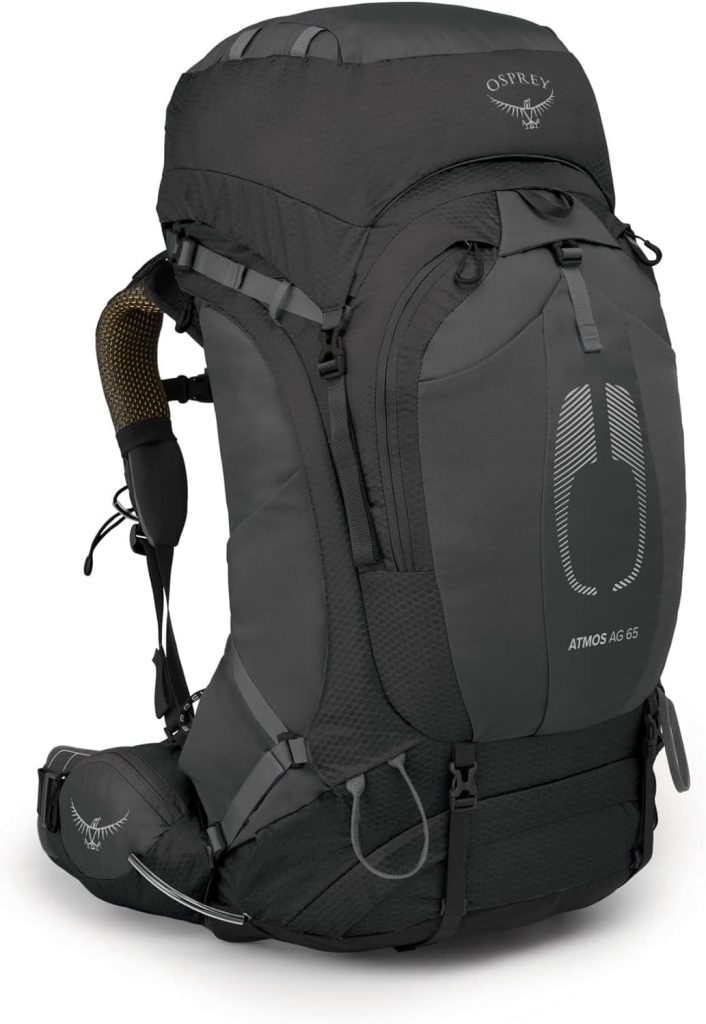
- Osprey Atmos: Known for its exceptional ventilation system, the Atmos uses Osprey’s Anti-Gravity suspension technology, providing a seamless, body-hugging fit that distributes weight evenly. This makes long treks more comfortable, reducing fatigue. The adjustable harness and hip belt add to its customizability, allowing for a personalized fit.
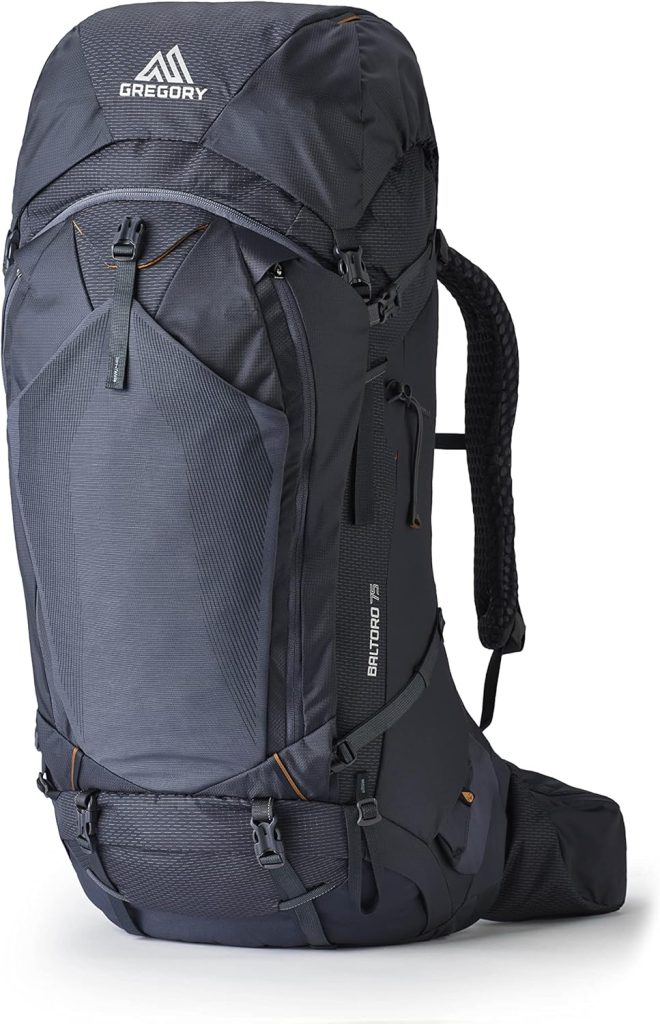
- Gregory Baltoro: Renowned for its robust build and load-carrying capacity, the Baltoro excels in handling heavy gear. Its Response A3 suspension system offers great flexibility, adapting to your body’s movements. The plush padding on the back panel and shoulder straps enhances comfort, even during extended hikes.
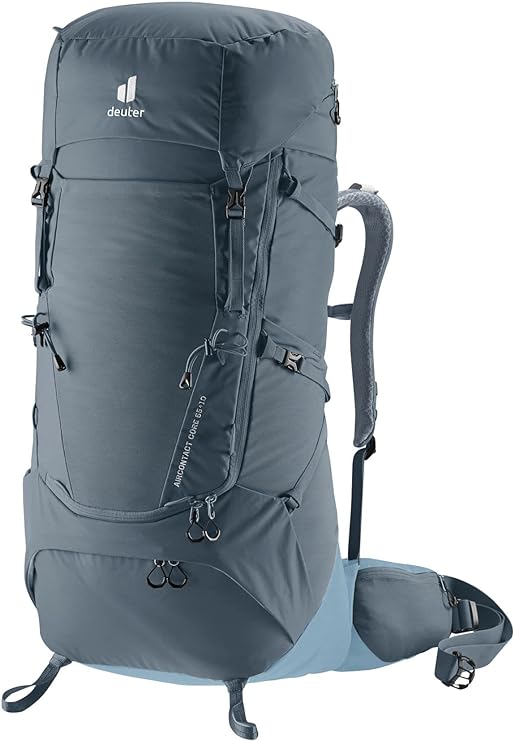
- Deuter Aircontact: Deuter’s Aircontact system emphasizes durability and breathability. The pack features an ergonomic design with excellent back ventilation, thanks to its Aircontact Lite system. It also boasts multiple compartments, making gear organization straightforward.
When comparing Osprey Backpacks vs. Competitors, the Atmos stands out for comfort and ventilation, while the Baltoro is ideal for heavy loads, and the Aircontact offers a balance of durability and breathability.
2. Travel
Travelers often seek backpacks that are versatile, durable, and easy to carry. In this category, the Osprey Farpoint, Patagonia Black Hole, and The North Face Base Camp are top contenders.
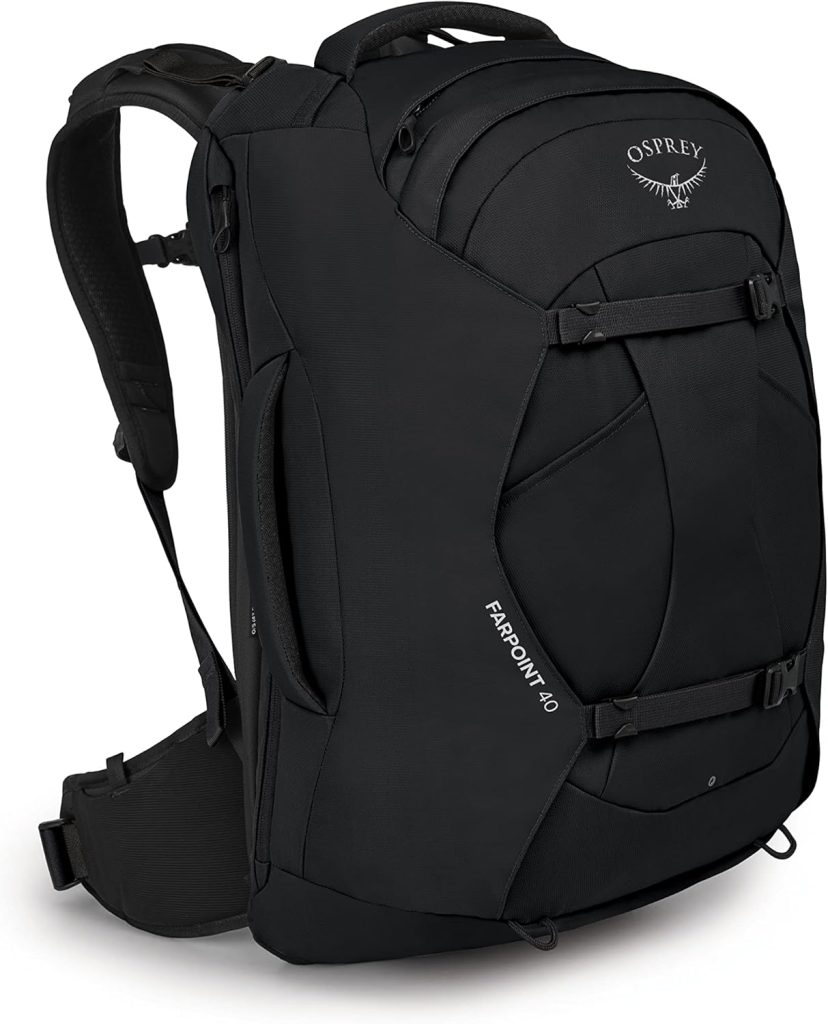
- Osprey Farpoint: Designed with travelers in mind, the Farpoint combines the functionality of a backpack with the ease of a suitcase. It features a large, lockable U-zip opening, making packing and accessing gear hassle-free. The lightweight frame and stowaway harness system enhance portability, perfect for airport navigation.
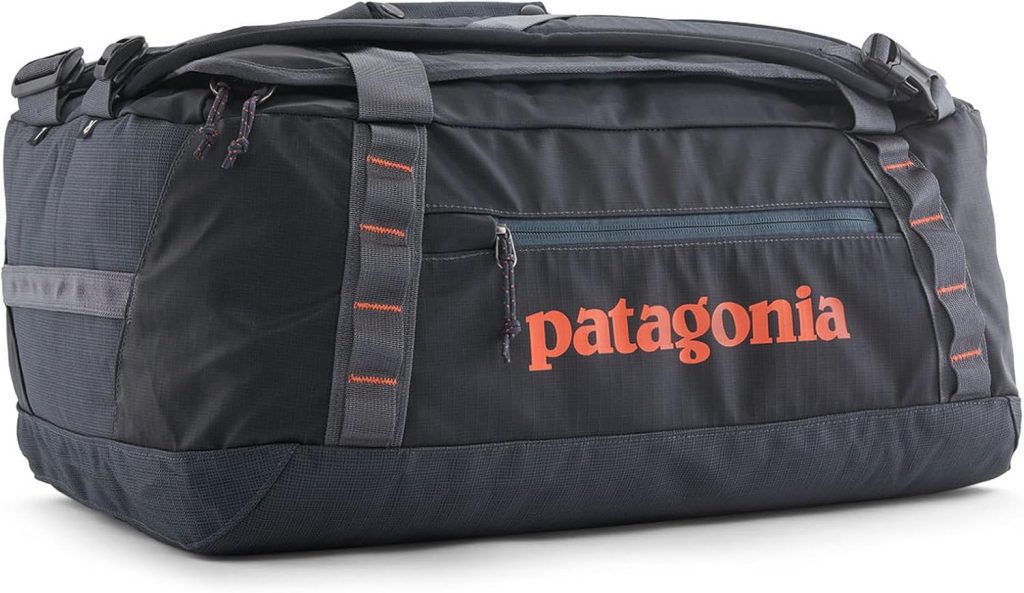
- Patagonia Black Hole: This rugged duffel-style backpack is built to withstand rough handling. Made from highly durable, weather-resistant material, it protects your belongings even in harsh conditions. The padded shoulder straps allow for comfortable carrying, and its simple design makes it easy to pack.
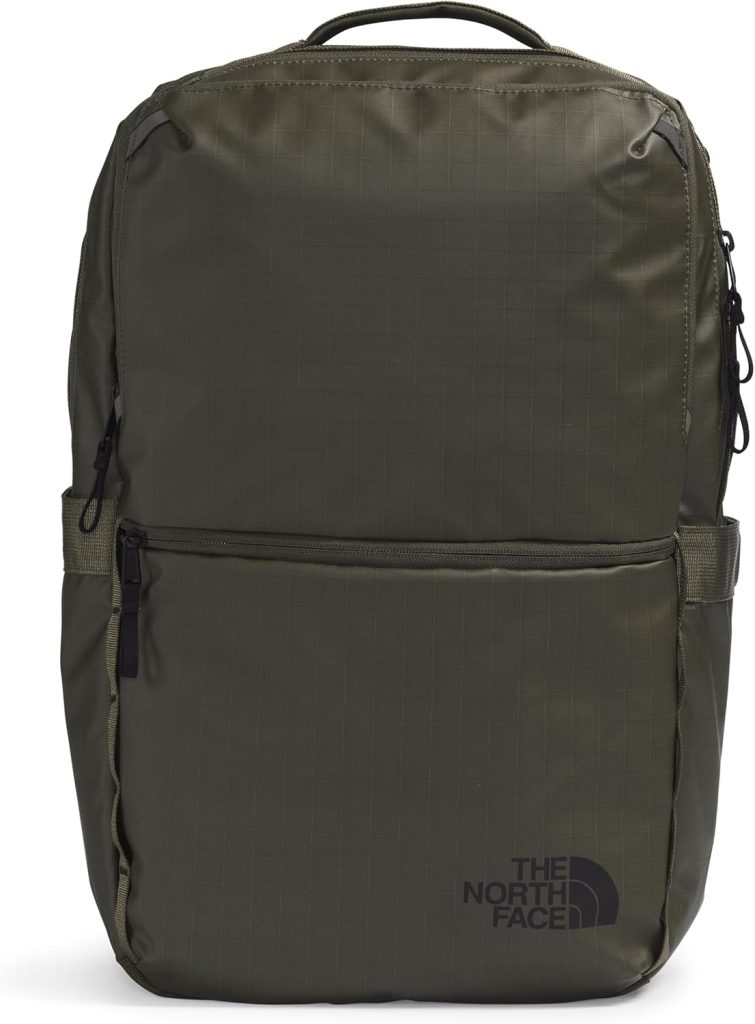
- The North Face Base Camp: Similar to the Black Hole, the Base Camp is known for its durability and weather resistance. It features a spacious main compartment with internal mesh pockets for better organization. The padded straps and multiple grab handles offer versatile carrying options.
In the context of Osprey Backpacks vs. Competitors, the Farpoint shines with its travel-friendly design, while the Black Hole and Base Camp focus on rugged durability and simplicity.
3. Everyday Commuting
For daily commuting, comfort, organization, and durability are key. The Osprey Nebula, REI Co-op Ruckpack, and Thule EnRoute offer excellent solutions for urban dwellers and students.
- Osprey Nebula: The Nebula is a versatile commuter backpack with a laptop sleeve, multiple compartments, and an integrated kickstand to keep it upright. Its padded back panel and shoulder straps provide all-day comfort, and the water-resistant materials protect your electronics and documents from the elements.
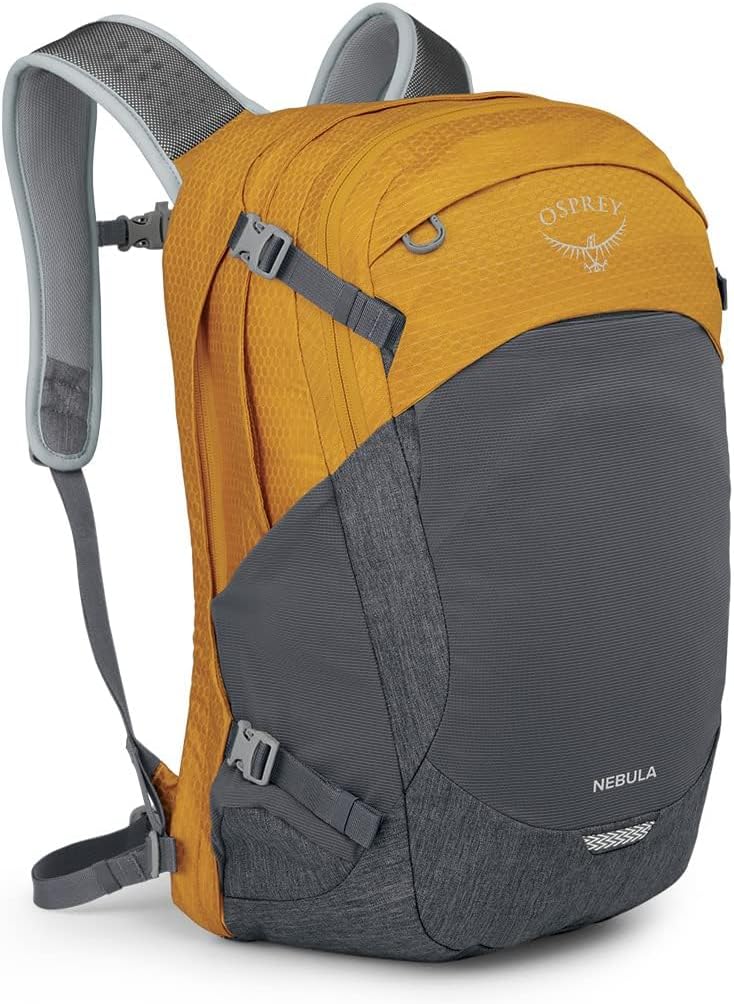
- REI Co-op Ruckpack: Designed for both city life and weekend getaways, the Ruckpack features a rugged build with ample storage. Its padded laptop compartment, hydration reservoir compatibility, and easy-access pockets make it practical for diverse commuting needs.
- Thule EnRoute: Known for its sleek design, the EnRoute offers a dedicated padded laptop compartment with SafeEdge construction, ensuring maximum protection. Its compact size, combined with smart storage options, makes it an excellent choice for those who prefer a minimalist style.
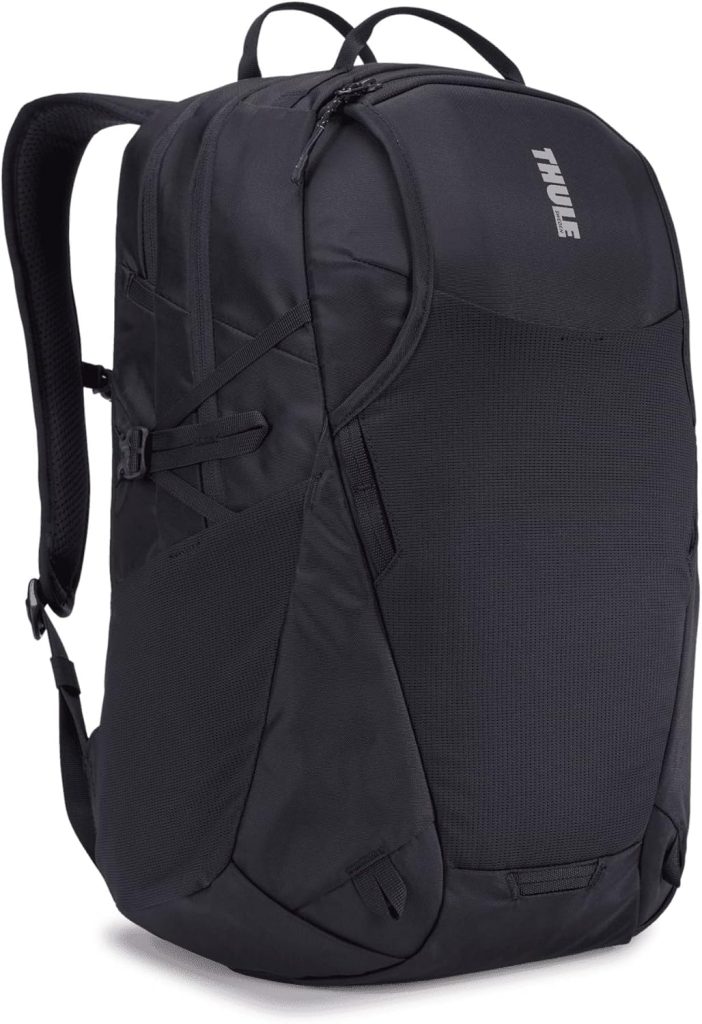
When evaluating Osprey Backpacks vs. Competitors in the commuting segment, the Nebula excels in organization and comfort, while the Ruckpack offers versatility, and the EnRoute appeals to those seeking a modern, streamlined design.
Conclusion: Osprey Backpacks vs. Competitors
In the comparison of Osprey Backpacks vs. Competitors, it’s clear that each brand brings unique strengths to the table, catering to different needs and preferences. Osprey stands out for its superior comfort, ergonomic designs, and industry-leading warranty, making it a top choice for those who prioritize durability and long-term value. Its wide range of specialized models ensures that there’s an Osprey backpack for nearly every activity, from hiking and travel to everyday commuting. On the other hand, competitors like Deuter, Gregory, Patagonia, The North Face, and REI Co-op offer compelling alternatives, whether through competitive pricing, innovative features, or a strong focus on sustainability. Ultimately, the best backpack depends on your specific requirements, whether it’s advanced suspension systems, eco-friendly materials, or budget-friendly options.
We hope this comparison has provided valuable insights to help you make an informed decision. If you found this post helpful, please like and share it with others who might benefit from this information. We’d also love to hear your thoughts! Have you used an Osprey backpack or one from a competitor? What was your experience? Share your opinions, questions, or recommendations in the comments below. Your feedback not only helps us improve but also assists other readers in making the best choice for their needs. Happy adventuring!

